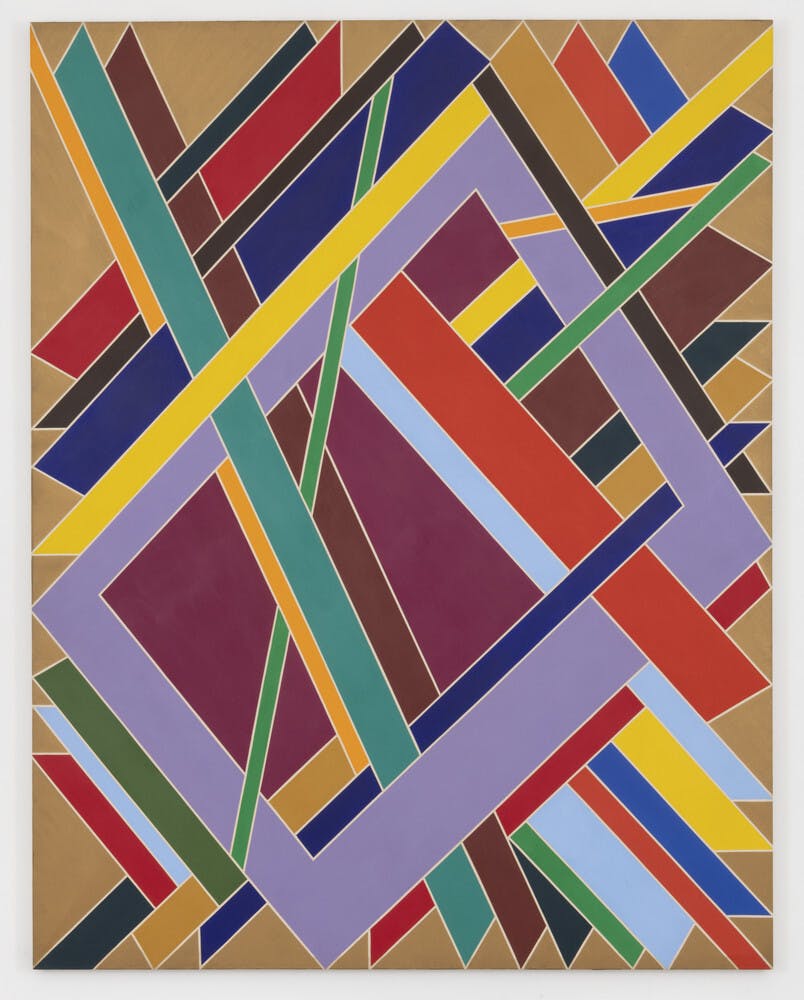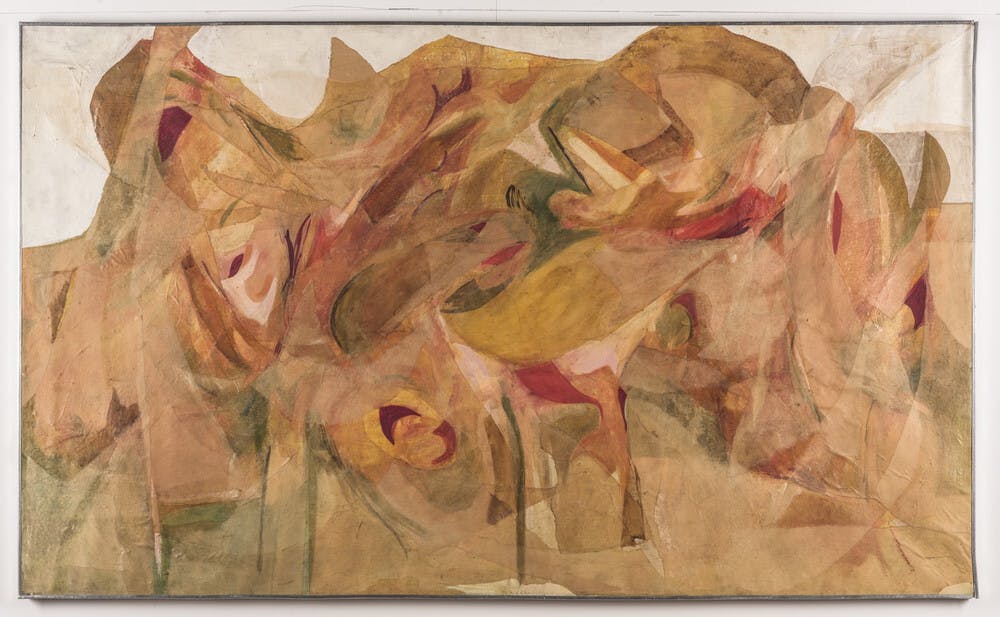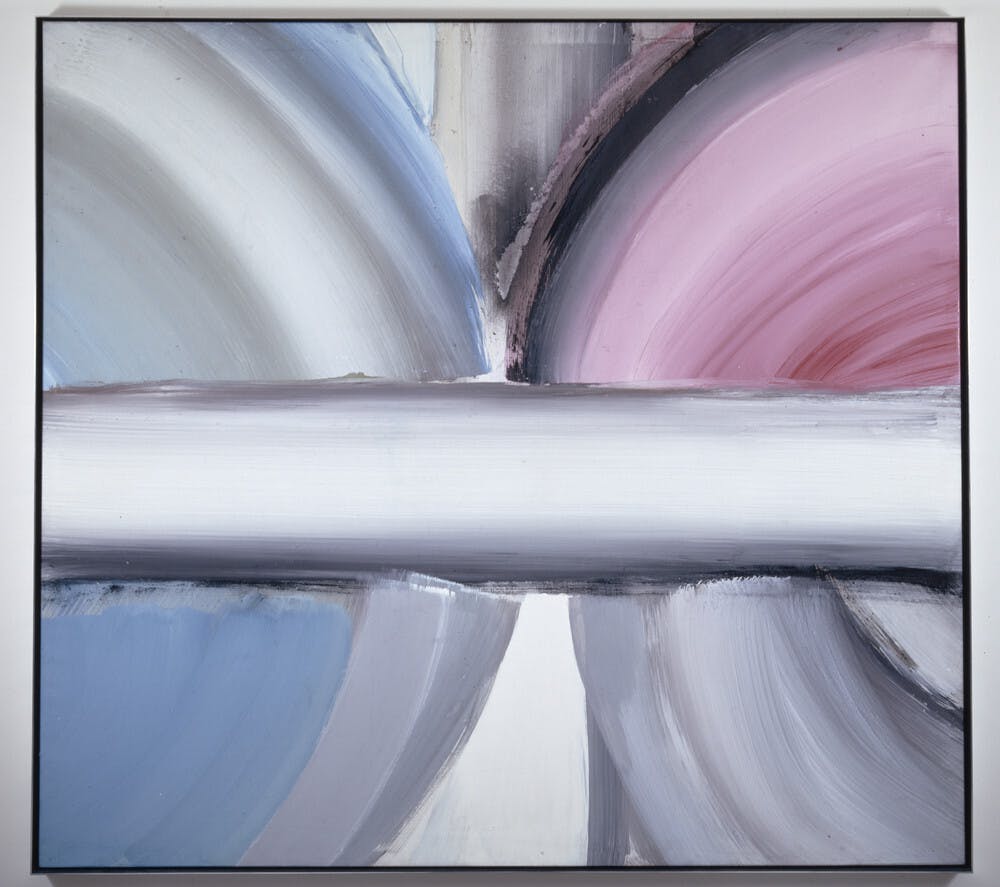Abstraction
These works are inspired by the artist collective Smokehouse Associates, who from 1968 through 1970 transformed vacant lots and barren walls throughout Harlem with colorful, abstract murals and sculptures.
Founded by William T. Williams and comprising Melvin Edwards, Guy Ciarcia, and Billy Rose, the Smokehouse Associates executed a series of painted walls in pocket parks, above neighborhood grocers, and against building facades. Employing abstraction as a device for community engagement, the collective endeavored to “let the message be the change rather than put information out which said why the world needed changing.”1 At the same time, the Black Power movement endorsed Black figuration as a conceptual and aesthetic tool for Black empowerment. Smokehouse instead embraced nonrepresentational techniques—through abstract geometries and hard-edged forms—to cultivate vibrancy, invite leisure, and, in due course, inspire local residents to borrow painting materials to enhance their surroundings.
Abstraction was organized by Habiba Hopson, Senior Curatorial Assistant.
Endnotes
[1] Melvin Edwards and Michel Oren, Michel Oren interviews with artists, 1979–1991, Archives of American Art, Smithsonian Institution, 5.
Around Smokehouse’s inception, Black artists such as Frank Bowling, Sam Gilliam, Al Loving, Alma Thomas, and Jack Whitten were also forging new directions in abstraction. Frank Bowling’s Blond Betsey (1976) showcases the artist’s technique of pouring paint onto canvas to create washes of color.
For William T. Williams and Al Loving, intersecting geometric shapes dominate in Trane (1969) and Variations on a Six Sided Object (1967), respectively, while in Untitled (1968), Betty Blayton-Taylor's entangled collage elements and loose brushstrokes portray a unique three-dimensionality.
Among others, Ed Clark began experimenting with nonconventional painting tools (a push broom), and, notably, Clark is the first credited artist to exhibit a shaped canvas. And, Alma Thomas’s Space (1966) and Sam Gilliam’s April 4, (Part III) (1968) offer viewers with abstract representations of the world around us.
Founded by William T. Williams and comprising Melvin Edwards, Guy Ciarcia, and Billy Rose, the Smokehouse Associates executed a series of painted walls in pocket parks, above neighborhood grocers, and against building facades. Employing abstraction as a device for community engagement, the collective endeavored to “let the message be the change rather than put information out which said why the world needed changing.”1 At the same time, the Black Power movement endorsed Black figuration as a conceptual and aesthetic tool for Black empowerment. Smokehouse instead embraced nonrepresentational techniques—through abstract geometries and hard-edged forms—to cultivate vibrancy, invite leisure, and, in due course, inspire local residents to borrow painting materials to enhance their surroundings.
Abstraction was organized by Habiba Hopson, Senior Curatorial Assistant.
Endnotes
[1] Melvin Edwards and Michel Oren, Michel Oren interviews with artists, 1979–1991, Archives of American Art, Smithsonian Institution, 5.






